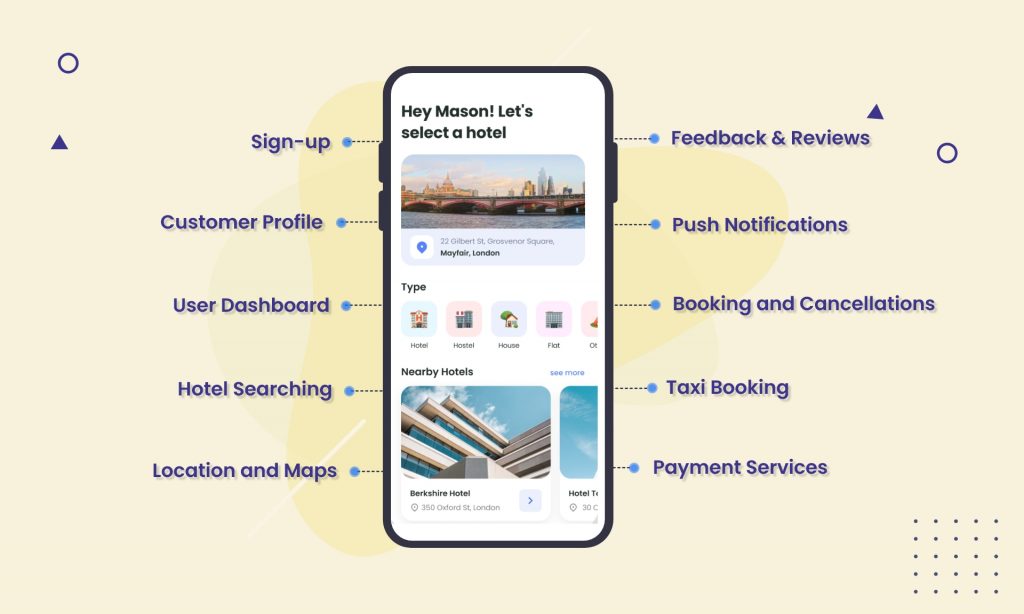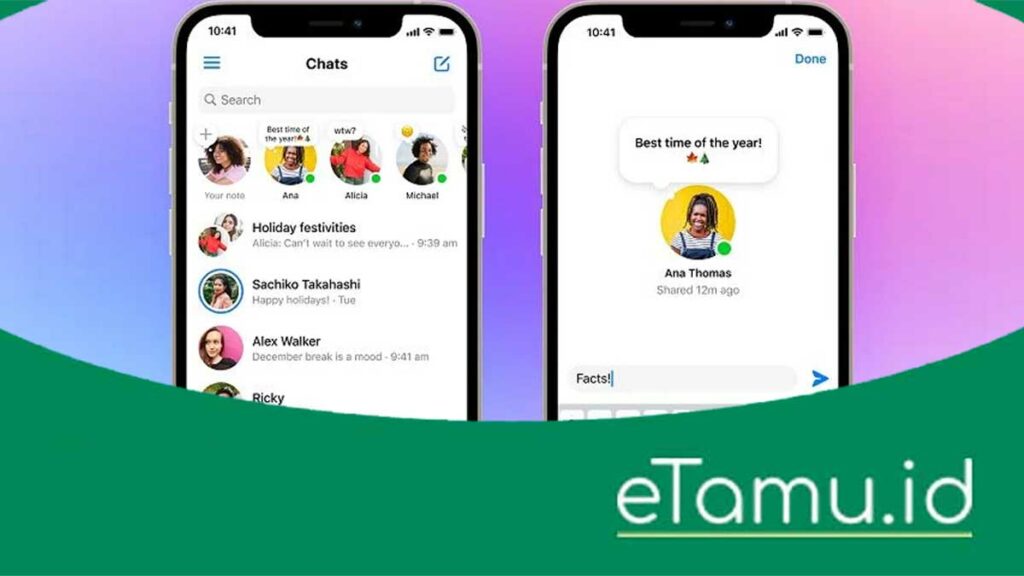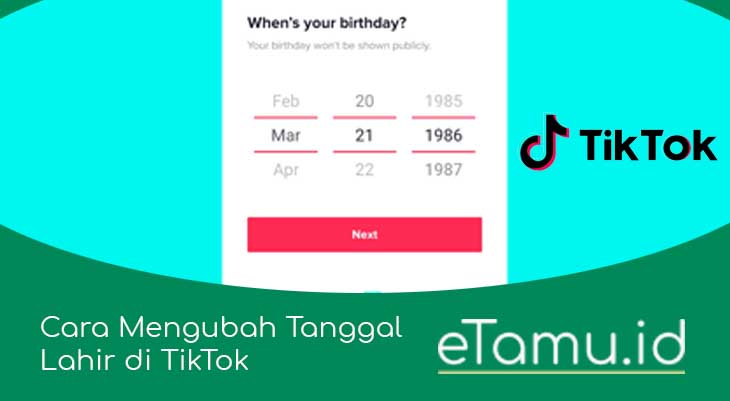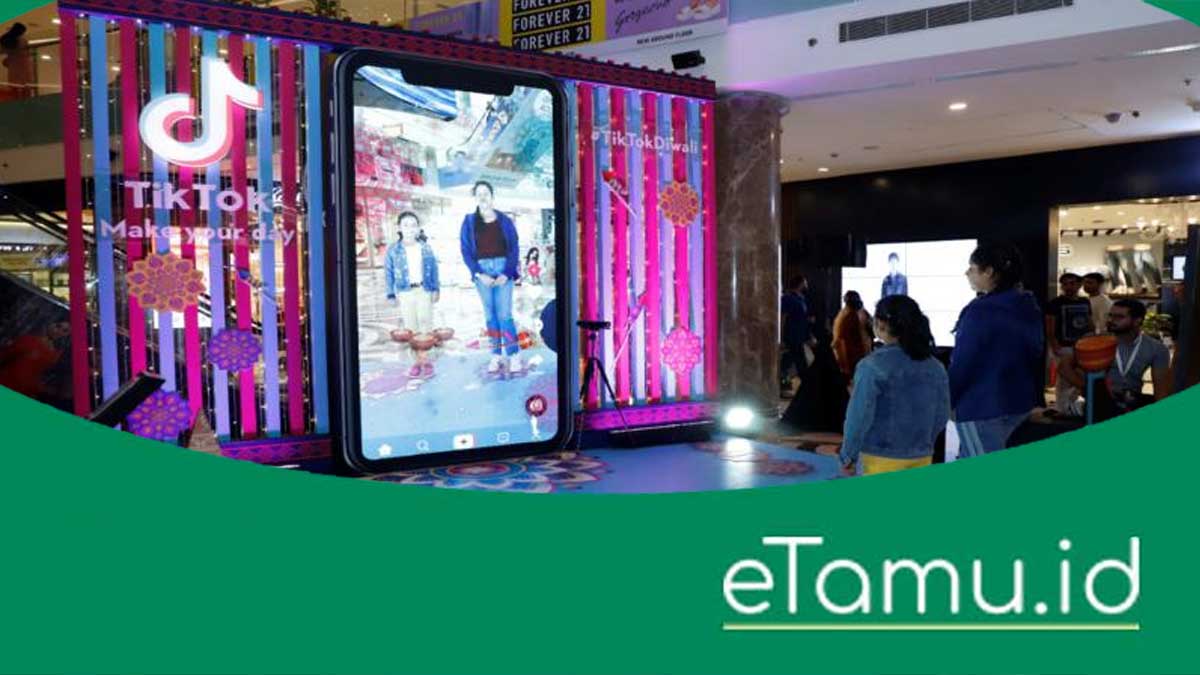Customer Support Features for a Booking Application are crucial for user satisfaction and business success. A well-designed support system enhances the user experience, leading to increased loyalty and positive reviews. This exploration delves into the key features, from in-app communication and booking management to payment assistance and proactive notifications, highlighting best practices and innovative solutions to create a seamless and supportive booking journey for every user.
This document examines various aspects of customer support within a booking application, focusing on practical implementation and strategic considerations. We will analyze different communication channels, explore efficient booking management strategies, detail secure payment and refund processes, and discuss methods for proactive support and feedback collection. The goal is to provide a comprehensive guide to building a robust and user-friendly support system that fosters trust and positive user experiences.
In-App Communication Features

Source: devtechnosys.com
Providing seamless and efficient customer support directly within your booking application is crucial for user satisfaction and retention. A well-designed in-app communication system allows users to quickly resolve issues, access help, and receive timely assistance without leaving the application. This significantly improves the overall user experience and reduces friction in the booking process.Effective in-app communication features enhance user engagement and build trust.
By offering multiple channels for support, such as live chat, email, and automated responses, the application caters to diverse user preferences and provides a flexible support experience.
In-App Messaging System User Interface Design
The in-app messaging system should be easily accessible, ideally via a clearly visible icon or button, perhaps located in the navigation bar or a dedicated “Help” section. The interface should be intuitive and user-friendly, featuring a clean layout with clear prompts and labels. Users should be able to easily compose and send messages, view previous conversations, and attach relevant files (such as screenshots or booking confirmations).
The chat window should display messages in a chronological order, with clear indicators for sent and received messages. Ideally, the system would also include features like typing indicators to show when a support agent is composing a response.
Effective customer support features are crucial for any booking application, ensuring user satisfaction and smooth transactions. This includes readily available FAQs, intuitive help menus, and prompt responses to queries. For instance, consider how design choices, such as those highlighted in this article on smart home interior design trends for 2024 and beyond , could influence the user interface and overall experience of a booking platform.
Ultimately, a well-designed support system contributes significantly to a positive user journey and increased bookings.
Examples of Messaging Features
Several features can enhance the in-app messaging system. Live chat provides immediate support, allowing users to connect with a support agent in real-time. Email integration allows users to send detailed inquiries or follow up on previous conversations asynchronously. Automated responses, or chatbots, can address frequently asked questions and provide immediate solutions to common problems, freeing up human agents to handle more complex issues.
For example, a chatbot could answer questions about booking cancellations or refund policies.
Benefits of Integrating a Knowledge Base
Integrating a knowledge base directly into the messaging system significantly improves the efficiency and effectiveness of support. Users can access relevant articles, FAQs, and tutorials directly within the chat interface, potentially resolving their issues independently before needing to contact a support agent. This reduces the workload on the support team and provides users with immediate access to information. The knowledge base can be searched using s or browsed by category, making it easy for users to find the information they need.
This self-service capability enhances user autonomy and reduces wait times.
Comparison of In-App Messaging Solutions
The choice of in-app messaging solution depends on factors such as budget, technical expertise, and specific requirements. Below is a comparison of different solutions.
| Solution | Pros | Cons | Integration Complexity |
|---|---|---|---|
| Intercom | Robust features, scalable, good analytics | Can be expensive, requires technical expertise for advanced features | Moderate |
| Drift | Strong live chat capabilities, good for sales and marketing integration | Pricing can be complex, limited email integration | Moderate |
| Zendesk Chat | Seamless integration with Zendesk suite, robust reporting | Can be expensive for large volumes of chats, less flexible than some alternatives | Moderate |
| Freshchat | Affordable, good for small to medium businesses | Fewer advanced features compared to larger platforms | Easy |
Booking Management Support
Effective booking management support is crucial for a positive user experience. Our aim is to provide seamless assistance to users needing to modify or cancel bookings, ensuring a quick resolution to any booking-related issues. This involves clear processes, proactive problem identification, and efficient communication strategies.Providing support for booking modifications, including changes and cancellations, requires a well-defined process. Users should be guided through a clear and intuitive interface, either within the app or via our support channels.
This ensures they can easily understand their options and make the necessary changes.
Booking Modification Procedures
Users should be able to easily modify their bookings directly within the application. This self-service option should cover common changes like date adjustments, time alterations, or passenger updates. For more complex changes or cancellations, users can contact our support team via phone, email, or in-app chat. Our agents will then guide them through the process, ensuring all necessary information is collected and the changes are implemented accurately.
A confirmation email or in-app notification should be sent to the user once the modification is complete.
Best Practices for Handling Booking Inquiries
Efficient handling of booking inquiries involves several key best practices. First, prioritize speed and accuracy in responding to user requests. A quick response time minimizes user frustration. Second, maintain a consistent and professional tone in all communications. Third, ensure that agents have access to all necessary booking information to quickly address user queries.
Finally, provide users with clear and concise instructions, and follow up to ensure satisfaction. For example, if a user reports a payment issue, a quick investigation and resolution, coupled with a clear explanation, would enhance the user experience.
Proactive Identification and Resolution of Booking Issues
A proactive approach to booking management involves identifying potential issues before they impact users. This could involve monitoring for booking patterns that indicate potential problems, such as a sudden surge in cancellations for a particular event or a high number of failed payment attempts. The system could then flag these patterns and trigger alerts for the support team to investigate.
For example, if a particular flight consistently experiences high cancellation rates, the system might automatically flag this and allow support staff to proactively contact affected customers to offer alternative options.
Resolving Common Booking Errors
A step-by-step guide for resolving common booking errors is essential for efficient support.
- Incorrect Date/Time Entry: Verify the entered date and time against the user’s calendar or other available information. Correct the entry and resend the booking confirmation.
- Payment Processing Errors: Check for insufficient funds, incorrect card details, or network connectivity issues. Guide the user through re-entering payment information or offer alternative payment methods.
- Duplicate Bookings: Identify and cancel the duplicate booking, refunding any associated charges. Send a confirmation email to the user, clarifying the situation.
- Booking Conflicts: Check for overlapping bookings or conflicting schedules. Inform the user of the conflict and assist in resolving the issue, possibly by offering alternative booking options.
Payment and Refund Support
Our commitment to providing excellent customer service extends to ensuring a smooth and transparent payment and refund process. We understand that payment issues can be frustrating, and we strive to resolve them quickly and efficiently. This section details our approach to assisting users with payment-related problems and managing refund requests.We provide comprehensive support for various payment-related issues, including failed payments and refund requests.
Our support team is trained to troubleshoot common payment problems, such as declined transactions due to insufficient funds or incorrect card details. For failed payments, we guide users through verifying their payment information and retrying the transaction. We also offer alternative payment methods where applicable.
Failed Payment Troubleshooting
When a payment fails, our system immediately notifies the user and provides clear instructions on how to resolve the issue. The user is presented with a list of potential causes and corresponding solutions, such as checking their card details, ensuring sufficient funds, or trying a different payment method. Our support agents can also remotely assist users in troubleshooting payment issues if needed, using secure remote access methods only with explicit user consent.
Detailed logs of all payment attempts and their outcomes are maintained for auditing and troubleshooting purposes.
Refund Request Process
Our refund process is designed to be straightforward and transparent. Users can submit a refund request through the app, providing details about their booking and the reason for the refund request. The request is then reviewed by our support team.
Refund Request Communication Strategies
Upon receiving a refund request, users receive an automated acknowledgment email confirming receipt of their request. Within [Number] business days, they receive an update on the status of their request, either approving or denying the refund and providing a clear explanation. For approved refunds, we provide an estimated timeframe for the funds to be credited back to the original payment method.
Examples of concise communication include: “Your refund request has been approved. The funds should be credited to your account within 3-5 business days.” or “We regret to inform you that your refund request has been denied due to [Reason]. Please see our refund policy for more information.”
Secure and Transparent Refund Management
We utilize a secure, internal system to manage refund requests and track their progress. This system ensures data privacy and maintains a detailed audit trail of all refund transactions. Each refund request is assigned a unique ID for easy tracking and reference. Access to this system is restricted to authorized personnel only, enhancing security and preventing unauthorized access.
Effective customer support features are crucial for any booking application, ensuring user satisfaction and smooth transactions. For instance, readily available FAQs and a comprehensive help center can address many common queries. However, managing expectations is key; sometimes, even with excellent support, issues may arise, such as needing to re-evaluate your budget, perhaps even after finding inspiration from articles like this one on creating a luxurious smart home interior on a budget.
Ultimately, proactive communication and problem-solving remain central to a positive customer experience within the booking application.
All refund transactions are securely processed, complying with industry best practices for data protection and financial security.
Refund Request Processing Flowchart
[Imagine a flowchart here. The flowchart would begin with “Refund Request Submitted,” then branch to “Request Received & Verified,” then to “Eligible for Refund?” with a “Yes” branch leading to “Process Refund” and a “No” branch leading to “Deny Refund & Notify User.” The “Process Refund” branch would then lead to “Refund Processed & User Notified,” and finally, to “Request Closed.” Each step would be clearly labeled, and the entire flowchart would visually represent the linear process of handling refund requests.]
Account Management Assistance
Managing your account should be simple and secure. This section details the features designed to help you easily create, access, and maintain your booking account, while ensuring your personal information remains protected. We prioritize user experience and data security equally.Account creation, login, and password management are fundamental aspects of a smooth user journey. We’ve implemented several features to assist users throughout the process, addressing common challenges and proactively protecting account security.
We aim to provide a personalized and efficient experience for each user.
Account Creation Support
The account creation process is designed to be intuitive and straightforward. Users will be guided through a simple form requiring essential information like email address, password, and optionally, a name and phone number. Password strength indicators will help users create secure passwords, preventing common vulnerabilities. Upon successful registration, users will receive a confirmation email with a link to verify their account, preventing unauthorized account creation.
This process enhances account security by requiring verification before full account activation.
Login Assistance and Troubleshooting
Users experiencing login difficulties can utilize a dedicated “Forgot Password” feature, triggering a password reset email. The email will contain a link to a secure page where users can create a new password. Alternatively, our support team is available to assist with login issues via email or live chat, addressing issues such as forgotten usernames or password-related problems.
Our support agents are trained to guide users through troubleshooting steps, providing clear instructions and efficient solutions.
Password Reset Procedures
The password reset process is designed with security in mind. Users initiate the reset via a dedicated link on the login page. A verification code will be sent to the registered email address to confirm the request and prevent unauthorized password resets. This multi-step verification process ensures only the account owner can reset their password. Once verified, the user is guided through creating a new, strong password adhering to our security guidelines.
Users are encouraged to use a password manager and to select strong, unique passwords.
Account Security Best Practices
We employ multiple security measures to protect user accounts and data. These include robust password policies, two-factor authentication (2FA) options, and regular security audits. 2FA adds an extra layer of security, requiring users to provide a second verification code from their mobile device or email in addition to their password. We also use encryption to protect sensitive data both in transit and at rest, complying with industry best practices for data security.
Effective customer support features are crucial for any booking application, ensuring user satisfaction and smooth transactions. This is particularly important when considering the integration of other technologies, such as the seamless incorporation of smart home features; for example, consider the innovative approaches discussed in this article on integrating smart home technology into traditional interior styles , which highlights how technology can enhance user experience.
Returning to booking applications, proactive support, such as FAQs and helpful tutorials, further enhances user experience and minimizes frustration.
Regular security updates and patches ensure the platform remains resilient to emerging threats.
Personalized Account Management Support, Customer support features for a booking application
Personalized support is achieved through a combination of proactive communication and tailored assistance. Users can access their account history, manage their booking preferences, and update their personal information directly within their account settings. Our support team utilizes the user’s account information to personalize responses and resolve issues quickly and efficiently. This personalized approach allows for efficient problem resolution and fosters user satisfaction.
Account Recovery Screen Mockups
Mockup 1: Forgot Password Screen
This screen displays a simple form with a single field for the user’s registered email address. A prominent button labeled “Reset Password” initiates the password reset process. A small link below redirects users to the login screen if they remember their password. Clear, concise instructions guide the user.
Mockup 2: Password Reset Email
This mockup shows a sample email received by the user. The email contains a clear subject line (“Password Reset Request”), a brief message confirming the request, and a unique, time-sensitive link to reset the password. The email explicitly warns against sharing this link with others.
Effective customer support features are crucial for any booking application, ensuring user satisfaction and smooth transactions. For instance, a seamless integration with smart home technology, such as the systems detailed in this article on smart home technology integration for stylish interior design , could even enhance the booking experience by allowing users to control aspects of their accommodation remotely.
This ultimately contributes to a more positive customer support experience overall.
Mockup 3: New Password Screen
This screen allows the user to create a new password. Fields include “New Password” and “Confirm Password,” with clear password strength indicators to guide the user towards creating a secure password. A “Save Changes” button completes the process. The screen displays clear instructions for password complexity requirements, including length, character types, and prohibited characters.
Accessibility and Multilingual Support
Providing comprehensive support in multiple languages and ensuring accessibility for all users is crucial for maximizing user satisfaction and inclusivity within our booking application. A diverse user base requires a support system that caters to their linguistic and accessibility needs, fostering a sense of trust and ease of use. This translates directly into increased user engagement and a positive brand image.Reaching a global audience demands multilingual support.
This goes beyond simple translation; it requires cultural sensitivity and an understanding of regional variations in language and communication styles. Furthermore, ensuring accessibility for users with disabilities is not just ethically responsible but also legally mandated in many jurisdictions. Failing to do so can result in significant legal and reputational damage.
Methods for Ensuring Accessibility for Users with Disabilities
Effective accessibility ensures that all users, regardless of their abilities, can easily navigate and use the support features. This involves implementing several key strategies. Screen readers should be able to seamlessly interpret all support content, providing clear and concise information to visually impaired users. Keyboard navigation must be fully functional, allowing users to access all support features without relying on a mouse.
Robust customer support features are crucial for any booking application, ensuring user satisfaction and smooth transactions. For instance, a helpful FAQ section can address common queries, while a live chat option provides immediate assistance. Thinking about home improvements? Consider incorporating sustainable practices, as detailed in this insightful article on achieving a sustainable and smart home interior design.
Returning to booking apps, proactive notifications and email support further enhance the user experience and build trust.
Furthermore, sufficient color contrast should be used throughout the support materials to ensure readability for users with low vision. Providing alternative text for images and videos further enhances accessibility. Regular accessibility audits and user testing with disabled users are vital for identifying and addressing potential barriers.
Effective Translation of Support Materials
Consistent and accurate translation of support materials is paramount. Employing professional human translators who possess subject matter expertise in both the source and target languages is recommended. Machine translation, while cost-effective, often lacks the nuance and accuracy needed for clear and reliable communication. A robust translation management system can help ensure consistency across all languages, preventing discrepancies and maintaining a unified brand voice.
Translation memory tools can help reuse previously translated content, reducing costs and improving efficiency. Finally, rigorous quality assurance processes, including review by native speakers, are vital to ensure accuracy and clarity.
Comparison of Different Approaches to Multilingual Support
Several approaches exist for providing multilingual support. One approach involves creating separate support materials for each language. This allows for tailored content and better reflects cultural nuances. However, it increases translation and maintenance costs significantly. Another approach uses a single support portal with language selection options.
This is more cost-effective, but may require careful design to ensure a seamless user experience across all languages. A hybrid approach, using a combination of these methods, can be implemented to optimize cost and user experience based on language demand. For example, high-demand languages may have dedicated portals, while less common languages might utilize machine translation with human review.
The best approach depends on the specific needs and resources of the booking application.
Proactive Support and Notifications
Proactive support significantly enhances the user experience by anticipating potential issues and providing timely assistance. By sending relevant notifications, we can guide users through the booking process, reduce frustration, and ultimately increase customer satisfaction. This approach minimizes the need for reactive support, freeing up resources and allowing for more efficient problem-solving.Effective proactive support leverages data and technology to anticipate user needs and provide timely, relevant information.
This strategy moves beyond simply reacting to problems and instead focuses on preventing them. This proactive approach builds trust and loyalty, creating a more positive overall user experience.
Notification System Design
A well-designed notification system requires careful consideration of several factors. It should integrate seamlessly with the booking application, delivering messages through multiple channels (e.g., in-app messages, email, SMS) based on user preferences. The system must also be easily configurable, allowing for adjustments to notification frequency and content based on user behavior and feedback. For instance, a user who frequently misses reminders might benefit from increased notification frequency or alternative delivery methods.
A system capable of A/B testing different notification strategies allows for continuous optimization.
Effective customer support features are crucial for any booking application, ensuring user satisfaction and smooth transactions. For instance, a well-designed help center can address common queries, while proactive notifications keep users informed. Consider the ambiance of a property; enhancing it with features like those described in this article on smart home lighting solutions for enhancing interior ambiance can significantly improve the customer experience.
Ultimately, a seamless booking process, combined with excellent support, fosters loyalty and positive reviews.
Effective Proactive Support Strategies
Examples of effective strategies include sending booking confirmations immediately after a successful booking, reminders 24 hours and 2 hours before the scheduled event, and post-booking surveys to gather feedback and identify potential areas for improvement. Sending targeted promotional offers based on past booking history can also be a valuable strategy. For example, a user who frequently books flights to specific destinations could receive notifications about special deals on flights to those locations.
Another example would be offering a discount on their next booking if they leave a positive review. Finally, providing helpful tips and information related to their booking, such as information about local transportation or attractions, enhances the user experience.
Data Analytics for Proactive Support
Data analytics plays a crucial role in identifying potential support issues. By analyzing user behavior data, such as booking patterns, cancellation rates, and common support queries, we can pinpoint areas where proactive intervention is needed. For example, a spike in cancellations for a particular event type might indicate a need for additional information or clarification on the booking details.
Similarly, a high volume of support requests related to a specific feature suggests the need for improved user documentation or a redesign of the feature itself. Analyzing user feedback from surveys and reviews can further illuminate areas requiring attention. Using predictive analytics, we can anticipate future problems based on historical data and trends.
Potential Notification Triggers and Actions
Before outlining specific triggers and actions, it is important to note that notification frequency and content should be personalized based on user preferences and behavior. Overly frequent notifications can be annoying, while infrequent notifications can be ineffective.
- Trigger: Successful Booking. Action: Send booking confirmation email and in-app notification with booking details and a link to manage the booking.
- Trigger: 24 Hours Before Booking. Action: Send email and in-app reminder with booking details and directions to the venue (if applicable).
- Trigger: 2 Hours Before Booking. Action: Send SMS reminder with booking details and a link to contact support if needed.
- Trigger: Booking Cancellation. Action: Send email confirming cancellation and offering assistance with rebooking.
- Trigger: Payment Failure. Action: Send email and in-app notification with instructions on how to complete the payment.
- Trigger: Post-Booking Survey Completion. Action: Send a thank you email and offer a small incentive for participation (e.g., discount on future booking).
- Trigger: User inactivity for a prolonged period. Action: Send an email checking in on the user and offering assistance.
Feedback and Review Mechanisms: Customer Support Features For A Booking Application
Your feedback is invaluable in helping us improve our customer support. We strive to provide seamless assistance, and your experiences directly influence how we refine our processes and tools. By actively soliciting and analyzing your feedback, we aim to create a more efficient and user-friendly support system.We employ several methods to gather feedback on your support interactions, allowing you to share your thoughts and experiences easily and conveniently.
This feedback is crucial for identifying areas needing improvement and ensuring we consistently meet your expectations. We analyze this data to understand trends, pinpoint recurring issues, and proactively address potential problems before they impact a wider user base.
Feedback Collection Methods
We understand that providing feedback can be time-consuming, so we’ve implemented various methods to make it as easy as possible for you to share your thoughts. These methods offer diverse options to suit individual preferences and ensure that all users have a convenient way to contribute to our continuous improvement efforts.
Using Feedback to Improve Support Processes
The feedback we collect is meticulously analyzed to identify trends and patterns in user experiences. For example, if a significant number of users report difficulty navigating a particular section of our help center, we can revise the content to improve clarity and accessibility. Similarly, frequent complaints about long wait times might lead us to optimize our staffing or implement new self-service tools.
This iterative process of collecting, analyzing, and acting on feedback is central to our commitment to enhancing support quality. A recent example of this in action was the implementation of a new chatbot system after users frequently requested a faster way to access basic support information.
Encouraging User Feedback
We actively encourage user feedback through various initiatives. We incorporate clear and concise feedback prompts within the support interaction itself, making it simple to share your opinion at the moment of your experience. We also periodically send out satisfaction surveys via email to gather broader insights into user satisfaction and identify areas for improvement. Finally, we promote the availability of feedback channels within our help center and app, emphasizing the value of user contributions to our ongoing efforts to enhance support quality.
For instance, offering a small reward or incentive for completed surveys has proven effective in encouraging participation.
Feedback Channels
| Feedback Channel | Method | Pros | Cons |
|---|---|---|---|
| In-App Survey | Short survey presented after a support interaction. | Convenient, immediate feedback, high response rates (if short and targeted). | Limited space for detailed feedback, may interrupt user flow. |
| Email Feedback Form | Link to a dedicated feedback form sent via email. | Allows for detailed feedback, provides context for longer responses. | Lower response rates compared to in-app surveys, can feel less immediate. |
| In-App Feedback Button | A dedicated button within the app to submit feedback. | Easily accessible, allows for quick feedback submission. | May lead to less structured feedback, requiring more time for analysis. |
| Social Media | Public feedback channels on platforms like Twitter or Facebook. | Public visibility, potential for community engagement. | Difficult to manage, may contain irrelevant or negative comments. |
Ending Remarks
Ultimately, exceptional customer support is paramount for any successful booking application. By implementing the features and strategies discussed—from intuitive in-app communication to proactive notifications and robust feedback mechanisms—businesses can significantly improve user satisfaction, increase loyalty, and drive overall success. A well-structured support system not only resolves issues effectively but also proactively anticipates and addresses potential problems, fostering a positive and seamless user experience that sets the application apart.
Questions and Answers
What happens if a user forgets their password?
The application should provide a secure password reset functionality, typically involving sending a reset link to the user’s registered email address or phone number.
How are refunds processed for cancelled bookings?
The refund process should be clearly Artikeld in the application’s terms and conditions. It typically involves a request from the user, verification of eligibility, and processing the refund through the original payment method, potentially subject to processing fees or cancellation policies.
What support is available for users experiencing payment issues?
The application should offer multiple channels for payment support, including live chat, email, or a dedicated help center article. Support staff should be equipped to troubleshoot common payment problems and guide users through the process of resolving payment failures.
How does the application ensure multilingual support?
Multilingual support can be achieved through automated translation tools, professional translation services, or a combination of both. The application should allow users to select their preferred language, ensuring all key information and support resources are available in their chosen language.
How can users provide feedback on their support experience?
The application should offer various feedback channels, such as in-app surveys, email forms, or direct feedback within the support chat interface. Feedback should be actively monitored and used to continuously improve the support system.
- AGC Glass A Global Leader in Glass Manufacturing - June 2, 2025
- Voice-controlled home Smart living simplified - May 6, 2025
- Smart Thermostat House Your Eco-Friendly Home - May 6, 2025









